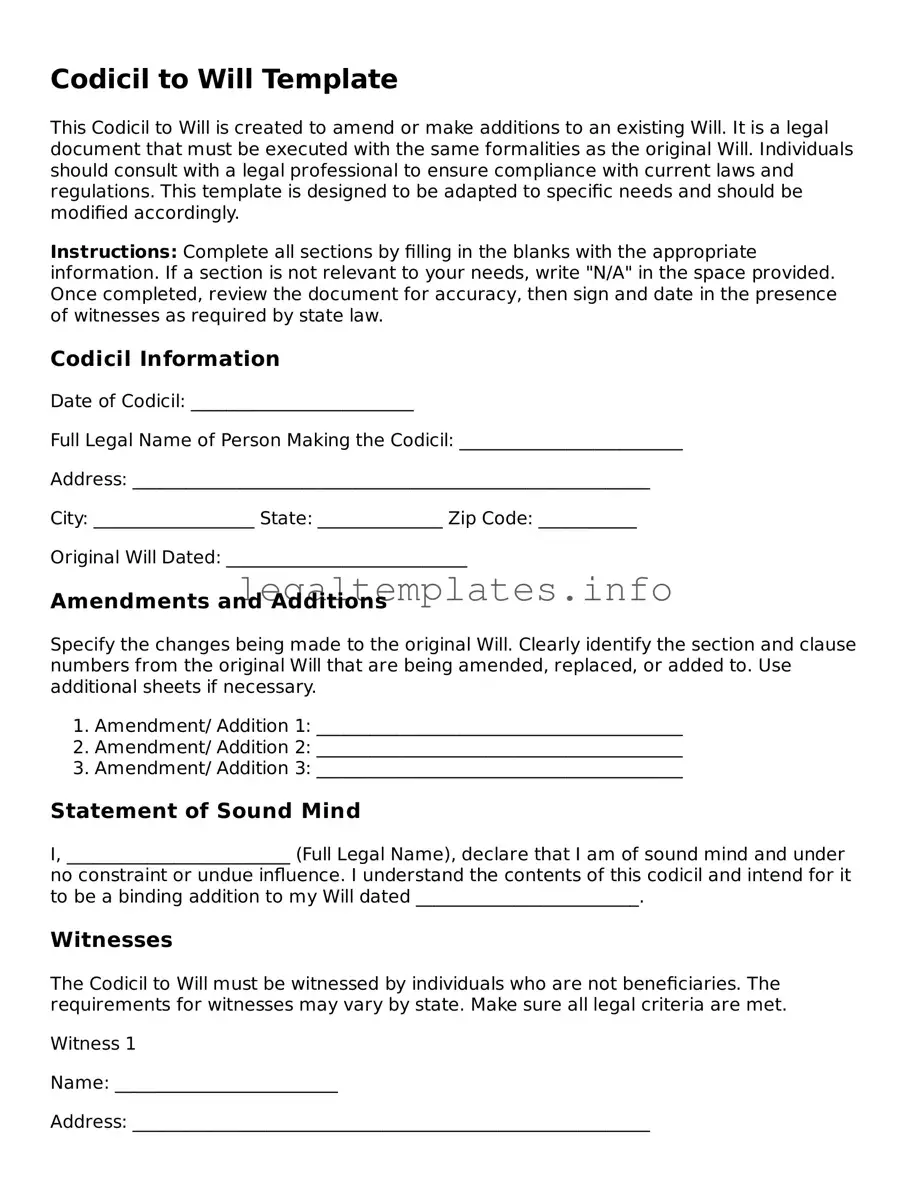Codicil to Will Template
This Codicil to Will is created to amend or make additions to an existing Will. It is a legal document that must be executed with the same formalities as the original Will. Individuals should consult with a legal professional to ensure compliance with current laws and regulations. This template is designed to be adapted to specific needs and should be modified accordingly.
Instructions: Complete all sections by filling in the blanks with the appropriate information. If a section is not relevant to your needs, write "N/A" in the space provided. Once completed, review the document for accuracy, then sign and date in the presence of witnesses as required by state law.
Codicil Information
Date of Codicil: _________________________
Full Legal Name of Person Making the Codicil: _________________________
Address: __________________________________________________________
City: __________________ State: ______________ Zip Code: ___________
Original Will Dated: ___________________________
Amendments and Additions
Specify the changes being made to the original Will. Clearly identify the section and clause numbers from the original Will that are being amended, replaced, or added to. Use additional sheets if necessary.
- Amendment/ Addition 1: _________________________________________
- Amendment/ Addition 2: _________________________________________
- Amendment/ Addition 3: _________________________________________
Statement of Sound Mind
I, _________________________ (Full Legal Name), declare that I am of sound mind and under no constraint or undue influence. I understand the contents of this codicil and intend for it to be a binding addition to my Will dated _________________________.
Witnesses
The Codicil to Will must be witnessed by individuals who are not beneficiaries. The requirements for witnesses may vary by state. Make sure all legal criteria are met.
Witness 1
Name: _________________________
Address: __________________________________________________________
Witness 2
Name: _________________________
Address: __________________________________________________________
Signature
I hereby declare that this codicil to my Will is made to reflect changes, additions, or amendments I wish to make to my original Will. I affirm that this codicil shall be considered part of my Will and shall be executed as such.
Signature: _________________________
Date: _________________________
Note: Ensure this codicil is safely stored with the original Will and that the executor(s) and any relevant parties are informed of its existence and location.
